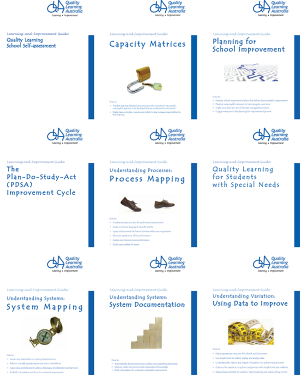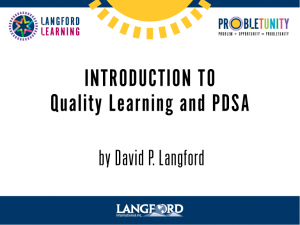Working to Learn
- David Langford
- Business, Education, General
- 0 Comments

Imagine you’re in sixth grade. You take the bus to school, walk to your classroom, the bell rings, and your teacher asks the class to be quiet. After taking roll call, she turns and says, “Quiet down guys, we have a lot of work to get done today.” Sometimes, this is followed by the promise of a reward. If you get your work done, you get 15 extra minutes of recess. Or a coupon valid for missing one homework assignment. Or the teacher simply wants you to get your work done because it’s the right thing to do at school. After the school day is done, some parents refer to their child’s school as their “job,” asking them if they’ve finished their homework.
While it’s great to teach students about discipline, there’s a considerable discrepancy between “work” and “learning.” What if teachers started the day by saying, “Quiet down, please, we have a lot of learning to accomplish today.” This simple switch changes the feeling of the classroom. By simply removing the word “work” from everyday school vernacular, teachers can dramatically alter their conversations with students. Asking students, “What are you trying to learn today?” instead of, “What are you working on today?” immediately stops students from thinking about school as a list to check off. Without a doubt, learning takes hard work, but unlike traditional “work,” learning is a never-ending growth process.
It doesn’t take kids long to catch on. A few years ago, I picked up my son from the bus stop, and on the way home he told me about a project he was working on at school. He was in the sixth grade, and the class was asked to memorize a poem to recite in class about a kid being sick.
“We have to hiccup in certain places,” my son explained.
I laughed. “What happens if you get the hiccups in the wrong place?”
He frowned. “We get points taken off.” When I asked why they were memorizing the poem, he said, “I think we need another big grade for the grade book.”
“Well,” I said, “what are you learning by working on this poem?”
“I was talking with my friends at lunch,” he answered, “and we were saying that we’re not learning anything important. We could get so much more learning done if we didn’t have to memorize these silly poems.”
Like many of the other sixth graders, my son inherently understood that this activity was a waste of time for himself and the teacher.
I don’t want to discount or discredit his teacher’s hard work; there may have been a purpose behind this assignment. Unfortunately, the aim wasn’t clearly communicated to the students. The poetry task missed the mark with my son not because it was a bad idea but because it was “work” instead of a learning opportunity.
I often field questions from teachers about making the switch from extrinsic to intrinsic motivation. Changing your vocabulary is a great place to start. It doesn’t matter if you’re teaching poetry to sixth graders or grammar to eighth-graders or the alphabet to kindergartners. If students don’t understand why they’re attempting a specific assignment, it will always be “work” instead of learning.
-

Guidebook Bundle (Read-Only PDF Download)
$90.00 Add to cart -

Introduction to Quality Learning and PDSA
$497.00 Select options This product has multiple variants. The options may be chosen on the product page -

Tool Time for Education
$75.00 Add to cart









